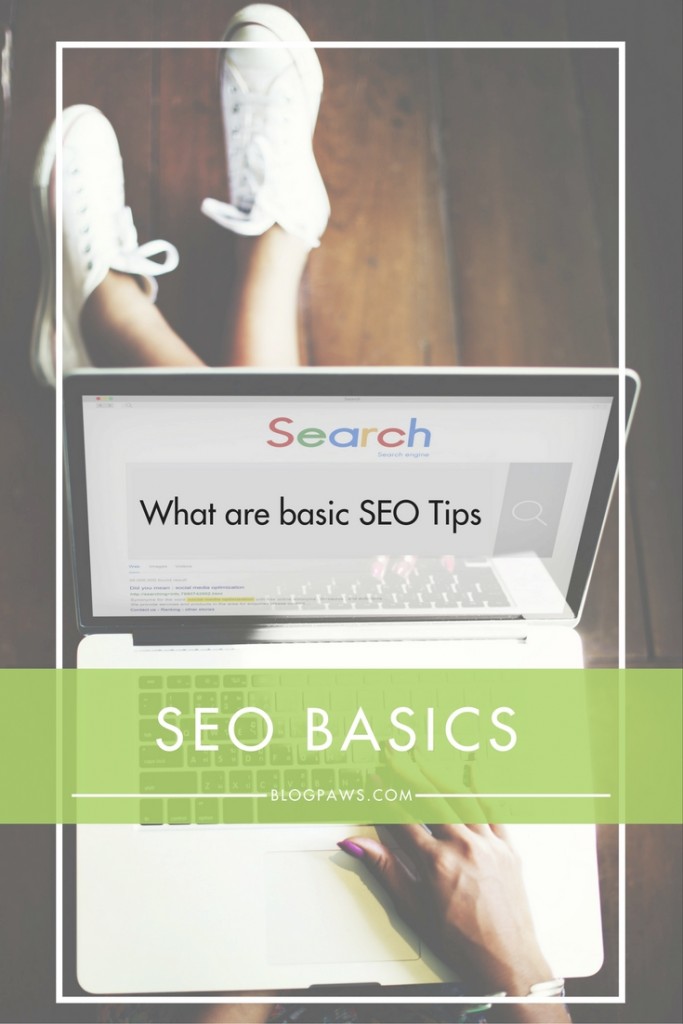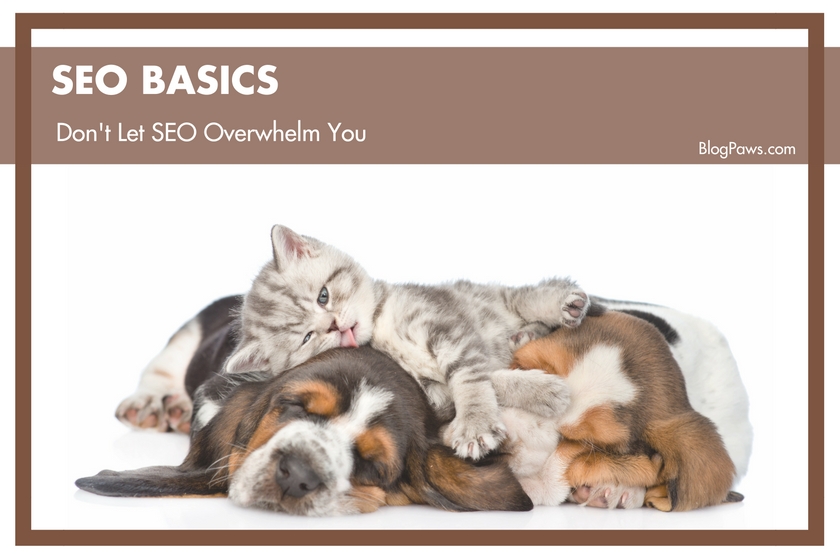SEO Should Not Make Your Fur Fall Out
What is Search Engine Optimization (SEO)?
When you use the Internet to find Whiskers’ favorite catnip or a new bone for Fido, the search engine responds with a list of relevant web pages. This is the Search Engine Results Page, or the SERP. These results are based on factors that influence which websites show in a specific search. The pages that come up — and the order in which they come up in — depends on more than 200 factors that Google considers as it creates a SERP. Search Engine Optimization (SEO) works with these factors to help influence those search results.
Key Factors in Search Engine Optimization (SEO)
Imagine Google’s ranking factors as pieces of a pie where some pieces are bigger and hold more weight, while others may only be slivers, having a smaller effect on search results. For the time being, let’s focus on the biggest pieces:
- Crawling – Search engines update their understanding of a site’s content by periodically crawling it. This results in delivering the best results in a SERP, stressing the importance of maintaining an SEO site.
- Indexation – Web pages are indexed by a search engine once a crawl is performed. It’s the process of adding optimized pages to the SERP to provide the closest match to an entered keyword, phrase, or question.
- Clickthrough Rate – If your listing looks great, more people will click on it when it shows up in a SERP. There’s a lot you can do to control how visible your site is, what language is used in it, and how excited people get about what you have to say. Which one of the below would you click?
- Search Visibility – What percentage of the search results are relevant to your website? Do you show up in Knowledge Graph? Does your brand have a Wiki page? Do you appear in search results for social media accounts? How does your website perform visually on desktop vs mobile? All of these factors comes into play when determining if your website is correctly optimized for SEO.
- Site Speed – The speed that pages load on your website is becoming important as a signal to search engines. If your website outperforms competitors in this territory, you are ahead of the game! Afterall, Fido and Whiskers will have more fun fetching a fast moving toy than a slow, sluggish one.
- Keywords – These are the words and phrases that are relevant to your website. If you sell fish tanks, include synonyms related to tanks, aquariums, and fish bowls as keywords. Use these on your website to tell search engines what your product pages are topically about.
- Links – Websites that direct users to your website are backlinks. You want to make sure those website are trustworthy and relevant. For example: If you sell dog hiking gear, you’d want to get links from dog related blogs, toy brands, and food companies. But what if you get links from a site that sells speed boats? Although it’s not directly related to what you sell, the speed boat company may have written a blog about what gear you’ll need to take dogs out on a boat. Within the post, there could be a link to one of your products. In this case, the link would be perfectly relevant and result in referring traffic to your site.
In addition to these important factors, other factors related to personalization will come into play:
- Personal History – Search results can be influenced by previous searches you’ve made. If you Google searched panthers, you might get served up both panther and cat images. On the other hand, someone who often searches for sports on the web would likely see results for the Carolina Panthers, a football team. Results will also be influenced by your activities on social media channels. If you liked a community page for panthers, this could help influence getting cat vs football results.
- Country – Where you live is going to impact results. For example, if you live in England, you will likely see different results compared to the United States. Searching “Red Coloured Kong Toy” vs “Red Colored Kong Toy” would serve up different results due to location.
- Geo Location – The location you search from is going to influence results, particularly when doing a local search. For example, searching for “Pet Shelter” brings up local results.
On-Site: How You Can Improve SEO
Let’s start gnawing on that SEO bone: How can you optimize for the most important on-site tactics?
Keyword Research
Keyword research is the practice of assigning keywords and phrases to pages on your website. If you have a page that is all about nylon dog bones, you’d to want to conduct research to find out what keywords users type to search when finding nylon dog bones.
Google Suggest is a great way to see what people are searching for the most. From this example, users are searching for “nylon dog bones safe.” You can use this technique as an opportunity to create content on the safety of these bones.
Another free tool to enhance keyword research is WordStream. You can type in a keyword you have in mind, and the tool will return specific keywords that are strongly associated with what you typed in. Not only are you able to see what people are searching for the most, but it can also give you ideas on content for your site and keywords to include in such content.
Optimize Images
While including images on your website is visually appealing, making sure these images are optimized for SEO is even more important. You want to include relevant images to your topic, text, or product, but don’t use images that belong to someone else unless you have permission. Chose images with good resolution and name your photos accordingly to help browsers crawl it.
For example, an image of a brown Flemish Giant Rabbit could be named brown-flemish-giant-rabbit.jpg instead of a less descriptive RabbitPicture.jpg.
Once you’ve named your photo, optimize your ALT text. These descriptions are text alternatives to images when a browser can’t properly read them. You want the ALT text to be as detailed as possible to help your image and website rank nicely in a search.
Metadata
Every search result contains metadata- the title and the description. For example: “Dog Toys & Food; Fido’s World” is the title for the homepage of a business called Fido’s World. The description gives additional details about the page and should be appealing and enticing to the reader. For example:
“Finding a unique dog toy or yummy treats doesn’t have to be so ruff. Shop our huge selection of the best toys and food for that special dog in your life.”
Remember in the last section we discussed click-through rate? Well, this is where that comes into play! A well-written title and description fits the targeted audience with appealing keywords. This presents the page as what a user is looking for, making it clickable.
Think of metadata this way: When Fido runs over to you with a ball and big eyes, he’s irresistible! You want your metadata to be just as irresistible to the reader.
Mobile Friendly
Have you wondered if your website should be mobile friendly? With 85% of sites being optimized for mobile, the answer is yes! Since smartphones, tablets, and other mobile devices are quickly becoming preferred over desktop computers, you need to get your site mobile-ready. Desktop vs mobile also rank differently in searches. As you make adjustments, you can test your site here.
Measuring Success
Once SEO adjustments are made, it’s important to measure website traffic and performance. This will tell you what’s working, what isn’t and how you stand with competitors.
Google Analytics – A free service that provides basic analytic tools and stats for marketing and SEO purposes. Build custom reports, motion charts to track progress, and audience demographics. You can teach yourself Google Analytics in one weekend!
Google Search Console – This collection of resources help monitor a website’s performance in a search index by understanding how Google indexes, crawls, and analyzes a site.
Get the Ball Rolling!
To sum it up, understanding the importance of SEO to your website impacts the success, visibility, and relevancy in the SERP. A solid SEO approach not only solidifies your content, but it ranks your site higher in results, ultimately leading to more traffic. The goal is to give your website the most complete set of data for Google to understand.
Do you have an SEO strategy? What works for you?
About the Author: Tyler Brown is a Digital Marketer at DragonSearch. She loves all things content and spends her days researching, constructing, and sharing custom content across a number of different verticals (pets being one of her favorites!). When Tyler isn’t hiking with her golden retriever or exploring trails with her horse, you’ll find her busy in the kitchen baking favorite recipes. Find her on Twitter @_tylerbrown. DragonSearch is a digital marketing agency in New York, which provides a range of services including SEO, PPC, content marketing and social media advertising. Follow DS Fido on Twitter for all the latest pet news and info.
Images: Rawpixel.com/Ermolaev Alexander/Shutterstock.com












